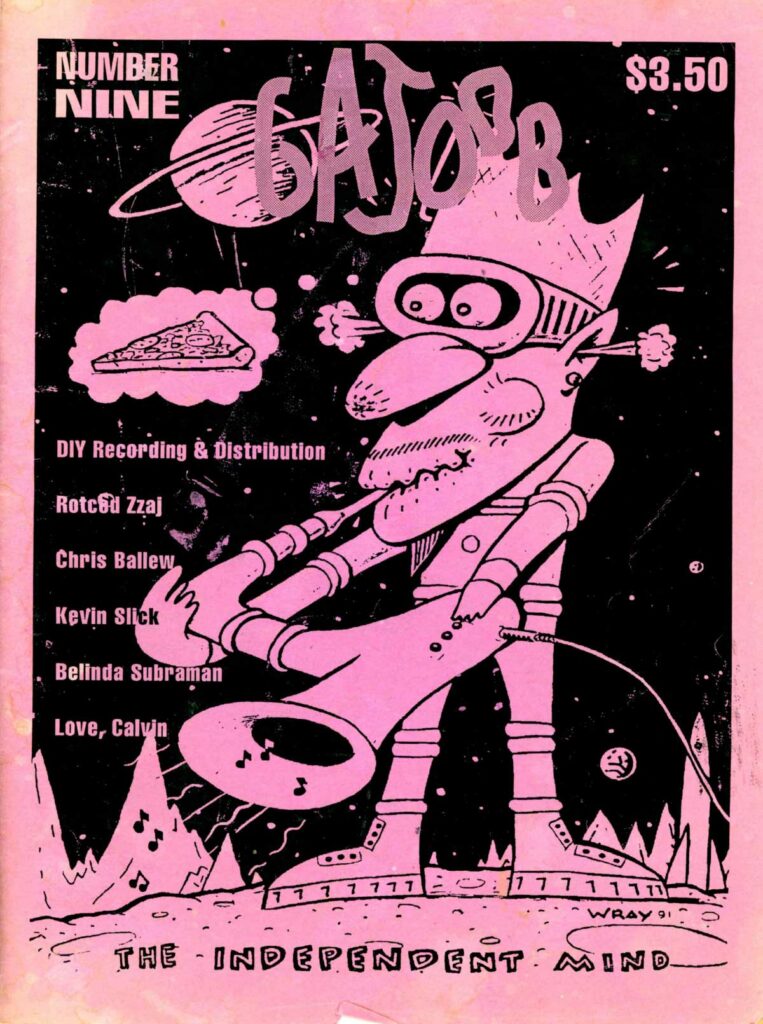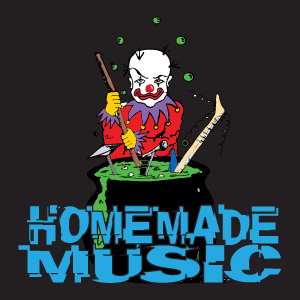Your cart is currently empty!
Daniel Prendiville Interview (1999)
This interview by M Redacted was originally published at homemademusic.com in 1999.
You can find Daniel Prendiville’s duvet in Nenagh, Ireland: and when he’s not residing in it, he’s recording some of the best euro-pop I’ve heard since the demise of HAIRCUT 100 (???!!?!!? , Kajagoogoo, surely – djp). I’ll give you, dear Gajoob reader, a brief accounting of “Prendiville: the Early Years!”, which I lifted verbatim from Daniel’s must see (Y Ten Q – djp) web site:
DJP: I’ve been playing music, on and off (more off than on, frankly), since1982, when I bought my first cheap, crappy Bass guitar. Which I still own. In that time I’ve played in two bands. 4-FLAGS, a four piece guitar-based pop group which never really amounted to much, even though we did support Rob Strong (who?) (Remember THE COMMITMENTS? Rob is Andrew Strong’s dad. Remember Andrew Strong???? – djp) on a number of occasions. ANY CROWDED CEILING, which started off as a four piece guitar-based pop group, then evolved into a two piece electronic, studio-based operation, then further evolved into a one piece, studio-based entity, which is what it was when it stopped being ANY CROWDED CEILING and started being me again.
Do you consider yourself a musician?
Most definitely not. I’ve no background in music at all, really. Despite numerous efforts on the part of my mother to get me to learn the piano and the accordion, I never had an real interest in learning an instrument. I could never hack reading sheet music. I hated practising, particularly “Little Brown Jug” and the ilk. I only started playing the bass at the age of 19, and that only because of a financial windfall that allowed me to buy the bass without having to beg for the money off my parents (“Wouldn’t you be better off putting the money into the building society?” etc.). So at the age when many rock musicians were having their first trip to the Betty Ford clinic, I was taking my first lessons from an uncommunicative C&W bass player. As soon as I learnt which notes were which and a few basic chord shapes, I dropped the lessons and tried applying what little knowledge I’d acquired to the songs I had going round in my head. I’ve always been interested in composing, arranging and producing, and I only really got into playing in bands as a way of getting into a recording studio. I don’t really have a great need to perfom live, indeed I never, until quite recently, had the urge to learn other peoples songs to play at parties etc. The only two covers I’ve ever recorded were on Ian Stewart’s SKYLACKING XTC tribute tape and doing that was a weird experience for me, I must say.
How did you find your way into the “hometaper” scene?
At the risk of upsetting 110% of the GAJOOB readership, I’ve never really considered myself to be a “hometaper”. After getting out of the live scene, I got into doing demoes with a view to securing a deal. However, after a few expensive sessions, the result of which were not very satisfactory, I decided that I’d be better off investing in my own equipment rather than throwing truckloads of cash at recording studios. But even at that, I was always recording with a view to getting a deal. It was only last year that I realised that there was such a thing as a “hometaper” scene and that what I was doing could, in a certain light and depending on the the toxicity of the chemicals one had ingested, be considered “hometaping”.
Describe your recording set-up.
You’ll laugh…
Steinberg Pro-24 MIDI software, running on an Atari ST1040 (ancient and knackered). Roland D110 Multitimbral module. Yamaha DX100 synth, which I use as a mother keyboard because my tiny, puny little hands won’t stretch across a bigger keyboard. Roland TR626 drum machine. Samick 16:2 mixing desk – noisy, primitive heap of shit, but it’s got 16 (count ’em) channels. Boss RV1000 Digital Reverb – noisy as the stomach rumbles of a sleeping buffalo. Tascam Porta07 4-track, mastering onto a Pioneer tape deck.
I also own a Yamato (you what?) Fender Precision copy. Buzzes like a vibrator (so I’m told) but it’s light and it stays in tune reasonably well. And an Aria T40 semi-acoustic, which I can’t really play. Done laughing yet?
Hey, if it ain’t broke, don’t fix it. And your recordings sound good to me. Must be the operator, not the equipment. Any tips for our aspiring readers?
The whole thing depends on the use that the recordings are going to be put. F’instance, I’m currently involved in a song-writing project with a guy in Dublin called Peter Fitzpatrick. Basically, I’m writing lyrics to Peter’s melodies. However, having spent years writing “songs” as whole entities, it’s rather hard for me to write lyrics in isolation from a melody. In any event, I usually have about 4 or 5 new songs running around my head, even on a bad day. Because of this, I’ve started throwing together some very rough demoes on the 4-track:- bass, appallingly bad guitar, vocals and whatever pre-programmed rhythm patterns suit the song. As the demoes are only meant for “internal consumption”, the standard of playing, singing, recording etc. is not important. So essentially, if you’re just doing demoes for fellow band-members or whatever, you need only do enough to get the feel of the track across. ‘Tis another thing entirely if you’re using recordings as a basis for securing a recording or publishing deal. From my own perspective, I’ve tried to make the demoes sound as close as possible to a finished product for a number of reasons. I want to impress on companies that I can arrange my material and that I won’t go apeshit in the studio and blow the budget recording anal bassoons or Tibetan nose flutes or whatever. In other words, I want to give ’em the “package”, rather than loose, half-formed, rambling idea-ettes. To that end, I had to go for MIDI sequencing, because it was the only way that a “non-musician” like myself could possibly approximate the music in my head. Obviously, non-MIDI people have their own modus operandi, but they should still aim for a “finished” product”, in my view. Where bands are concerned, I feel that their demoes should stick as close to the live versions of songs as possible. Beyond that, it’s up to the individual (or the group of individuals, or the individual groups or…).
Oh, and wear a condom, even if you’re not having sex.
Especially if you record in the nude (female readers don’t worry – its a guy thing). Do you see the “hometaper” scene as a legitimate cultural milieu unto itself, or as a talent pool from which certain recording artists will emerge into the commercial music industry?
Again, at the risk of alienating the two GAJOOB readers that I haven’t pissed off already, I’m a little bit dubious about the “hometaper” scene, I’m afraid, and the DIY scene generally. To be a legitimate cultural milieu, there has to be some sense of identification with, and acceptance of, hometaping by the general public and the media in particular. My main problem with “home produced” music is with its quality. I’ve been doing some reviews for Ian Stewart’s ‘zine AUTOreverse of late, and unfortunately, most of the stuff I’ve heard is crap. I know the *music industry* is full of rubbish as rule, but when you consider the number of people that a piece of music must please before it ends up on your hi-fi… e.g.- other band members, publisher, manager, producer/remixer, A&R executive, record store purchaser, radio/TV playlist manager, yourself – the music that’s released by the industry (either major, minor or indie) has gone through a filtration/selection/approval process which *should* guarantee that, regardless of whether one likes the music or not, the music is of a certain level of quality. I know this doesn’t always work, but it’s a good idea. With the “hometaper” scene, there generally is no quality control other than that exercised by the artist(s). This is not necessarily a good thing. Obviously, one would hope that all good (or better) artists would have as much creative control as is necessary to realise their artistic vision. But the problem with “hometaping”/ self-publishing is that quite often, there is no one who can call the artist to one side and say, “Look, this is shit. Don’t release this.” This is not such a problem where you have material which is “meant” to be lo-fi and which exists in its own (dare I say) twilight world. But it’s now becoming increasingly cheaper to buy synths/ADAT/what-have-you. More and more people will be able to produce their own CDs. Hurray! But will the stuff be any good? A self-produced/self-financed CD can often *look* as good as a CD issued by Sony or Warners. But when you take it home and stick it on the player, there’s more than a 50/50 chance that the CD will fail to satisfy. Why? the material is intrinsically crap (the artist is too close to the material to assess it objectively, and there may be nobody else around to do the job); the music sounds like it was recorded on (and probably by) a shoestring; the artist is either trying to sound like her/his hero(es) or is trying (quite often, very hard) to be wilfully different. The more duff stuff is heard which is categorised as hometaper music, the less likely it is that this means of artistic expression will succeed in making its mark with the general public. Tapes of guys banging metal pipes while droning on about religion and the size of their willies [M: where can I get my hands on this tape?] won’t cut much ice with Average Joe Walkman. If keeping total artistic and creative control solely in the hands of the artists is supposed to be a real guarantee that “hometaping” produced higher quality music than the “industry”, then why is so much independently produced music so shitty? Better ask the artists that one, you can’t blame Sony this time! So do I consider the scene to be a “legitimate cultural milieu”? No, not really. A tiny minority of “hometapers” are very talented and could, if brought to the attention of the general public, enhance our global culture significantly. The rest (including myself more than likely) should probably just stay at it for the sheer fun of it. And there’s no harm in that, when you think of it. As for the second part of your question, I agree that the scene could be be seen as a talent pool of the record industry, but, again, only if the material is good enough. The scene will not be taken seriously otherwise. Maybe, dare I say it, the scene should organise itself in such a way as to promote its positive aspects, with a view to maximising its impact on the biz.
OK, I’ll buy that. Let’s talk about your music. Specifically, your cassette releases and how readers can obtain them.
In a nutshell:-
RUBBER SOLE was recorded in an 8-track studio in Dublin in 1989 and captures (im)perfectly my lack-of-state-of-mind at the time. I’ve always tried to have a slightly skewed view of life. Reality can be shit, you know, and sometimes squinting at the world rather than looking at it with one’s eyes wide open can give one the vague hope that maybe things aren’t quite as bad as they actually are.
GOOD RIDDANCE – individual tracks that were eventually bribed into becoming an “album”. Programmed in Dublin, Bray and Nenagh in 1991/93 and eventually recorded in my garage in Nenagh in 1993. All vocals were taken live, as I had no multi-tracking facilities at the time. Most of it stands up well. COLOGNE is my favourite track, while HEAVEN SCENT has my best lyrics. GOOD RIDDANCE relates to two things, with the benefit of hindsight, saying GOOD RIDDANCE to Dublin where I’d spent eleven less-than-joyous years, and saying GOOD RIDDANCE to all those particular songs. If I have a body of songs that I’ve recorded but haven’t but into a particular context (e.g. an album), then I find it impossible to work on any new material, therefore, the mere act of recording an “album” of material freed me up to tackle some new stuff.
BREATHING SPACE – being somewhat of an optimist, I started thinking about a “follow-up” to GOOD RIDDANCE, but since it takes a long time to compose, arrange, programme and record a 20-track “album” in between house decoration, fatherhood, work-related travel and occasional hangovers, I got the half-assed idea to throw together an “experimental” instrumental album to act as a “breathing space”. I ran it up in a matter of months, and all things considered, it’s not a *bad* “experimental” album. Halfway through, I bought the 4-track and used it on a few tracks. My favourite track is CHANT OF THE EVER-CIRCLING FOOD STYLISTS.
Do you get much direct inquiry about your music from your website? Or is it more from articles like the one in AUTOREVERSE?
Very little, I fear. Let’s not kid ourselves…not every one has access to the Internet and of those, not too many are necessarily going to get their gussets moistened over the prospect of hearing DIY music recorded in primitive conditions. Still, I do appreciate hearing from people interested in listening to my music. I’d appreciate it even more if they contacted me again having heard the music…. To be fair, the Internet has a certain novelty value at present and people are inclined to embrace what they find on the ‘Net with a certain degree of tolerance…for the moment. Fanzines, however, seem to paint themselves into a corner – limited print runs, limited distribution, limited interest etc. At least with fanzines such as AUTOREVERSE [M: Hey, let’s not forget Gajoob!], which have a ‘Net presence, distribution is unlimited. And to be fair to Ian Stewart, he’s a talented writer and AUTOREVERSE is an interesting read, barring me own reviews, of course. Otherwise, I think there is little real merit in hard-copy ‘zines per se; who’s gonna read the bastards?
There, have I offended everyone now?
by
Comments

- Ads (3)
- Albums (137)
- Artificial Intelligence (1)
- Audio Art (13)
- Books (3)
- Briyan (1)
- Business (5)
- Cassette Culture Shock (3)
- Channels (2)
- Collaboration Projects (4)
- Comics (1)
- Creative (10)
- Discover Sounds (1)
- Editorial (2)
- GAJOOBTube (2)
- Gear (8)
- Instruments (4)
- Interviews (9)
- Labels (14)
- Letters (3)
- Library (14)
- Links (5)
- Merch (2)
- News (2)
- People (17)
- Performance (1)
- Podcast (1)
- Profiles (29)
- Projects (0)
- Tapegerm (6)
- Uncategorized (7)
- Video (3)
- Video & Vlogging (0)
- Vlogs (1)
- Websites (6)
- Zine Making (1)
- Zines (11)

*Purchasing via Amazon affiliate links helps support our efforts at no additional cost to you. Thank you!


Leave a Reply
You must be logged in to post a comment.